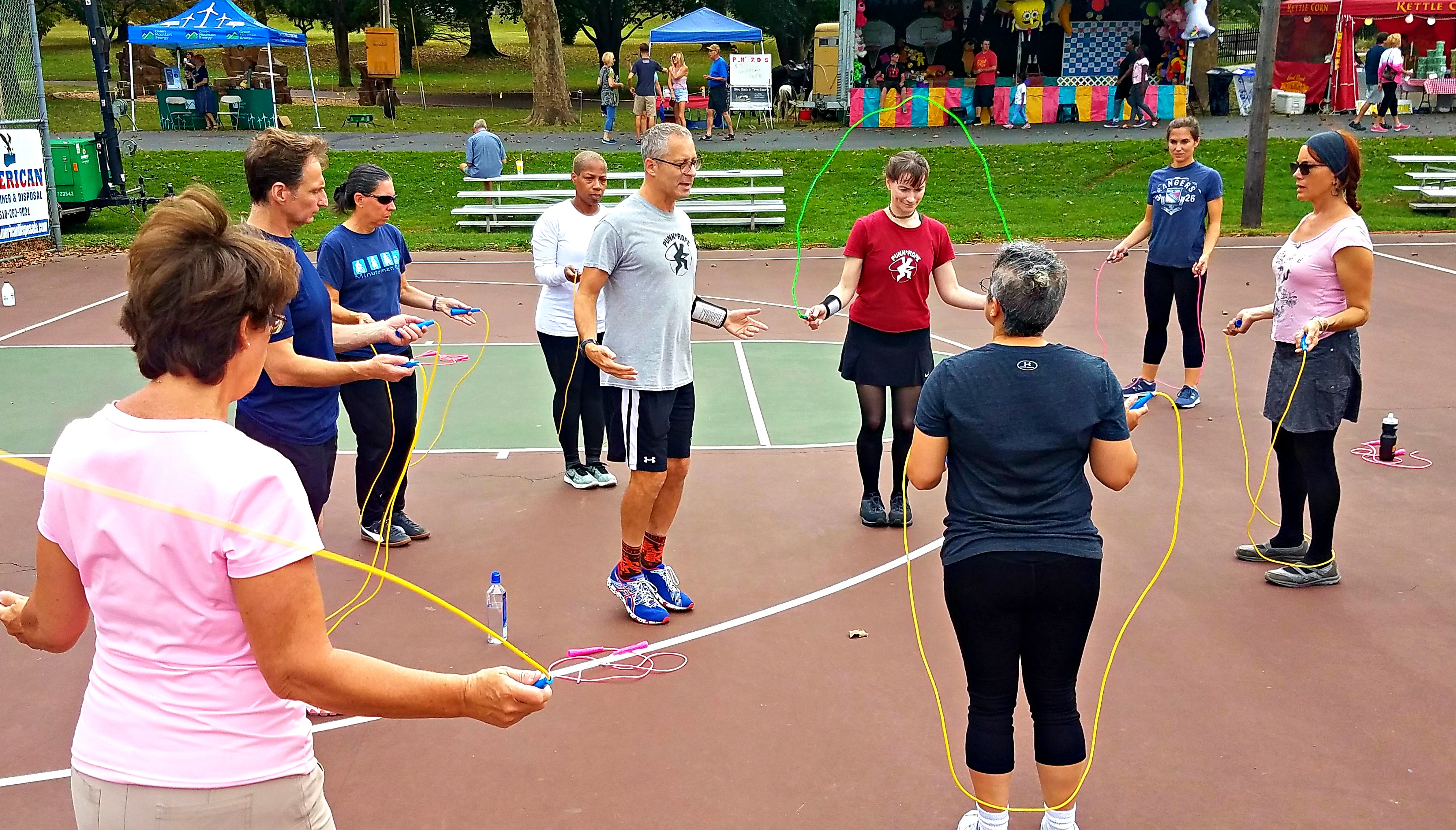Whether you’re looking to expand your personal training repertoire or want to offer group fitness clients more options, or maybe just want a way to reboot your own fitness without having to venture outside, rope jumping is an excellent modality to explore.
The Many Benefits of Jumping Rope
Now more than ever, jumping rope—or skipping as it’s referred to outside the United States— is quite an attractive exercise option. It can be done indoors in the comfort of your home, or in your garage, yard, or driveway—if you happen to have one. Since you don’t need to wear a face-covering while jumping rope at home, you’ll be more comfortable and will be able to exercise at a higher intensity than if you were running or cycling outdoors with a mask on when physical distancing poses a challenge.
Speaking to the fitness and health benefits, rope jumping compares favorably with most other cardio modalities. You can expect to improve your cardiovascular conditioning, coordination, agility, quickness, speed, lower body muscular endurance (particularly your calves!), bone density, and rhythm and timing!
In terms of caloric expenditure, research by McArdle, Katch, and Katch (2014) determined that an adult weighing 150 pounds will burn roughly 12 calories per minute jumping rope at a relatively comfortable pace of 125 revolutions per minute. That’s nearly identical to the number of calories the same person would burn running at a 10-minute-per mile pace but with potentially less wear and tear on their joints. Jumping at a faster pace, using a weighted rope, or performing a challenging step—such as the double under—can increase caloric expenditure significantly.
But Wait There’s More!
Other features of jumping rope that may entice skeptics such as a surprisingly quick learning curve include:
- Cost: you can purchase a high-quality rope for less than $10
- Portability: a standard rope weighs only 4 ounces and can fit in a small bag
- Efficiency: a thorough workout can be completed in less than 30 minutes
- Variety: there are endless steps and sequences to learn
- Fun Factor: jumping rope pairs nicely with music, feels much like dancing, and can be done solo, in pairs, or in groups so the whole family can join in
And if you want to jump with a buddy in a neighboring household or with a friend across the ocean you can do so safely and virtually using some of these wonderful tips.

Getting Started
Start Gradually. If you decide to “jump in” (pardon the pun), make sure you start gradually to give your body plenty of time to adapt to the new physical demands being placed on it. And as you progress, try to limit your increases in jumping volume to no more than roughly 10% each week.
Size Matters. If you already own a jump rope of the correct length, you’re good to go. What’s the correct size you ask? When you stand on your rope with one foot and pull the handles (and the rope) up toward the sky so that the rope is taut, the top of the handles should reach your armpits. If you don’t have a rope of the correct length, we suggest you purchase one that can be shortened as opposed to a fixed-length rope. As you become a more proficient rope jumper, you’ll be able to use a shorter and shorter rope, hence the appeal of a rope that can be adjusted.
Watch a Video. There’s no shortage of excellent rope jumping video tutorials on YouTube and Vimeo and there is even a variety of virtual jump rope classes you can check out. If you decide you’d like to be a jump rope coach or teacher, we invite you to consider Punk Rope’s Jump Rope Instructor Certification which has been in existence since 2004 and includes 1.8 NFPT CECs.
Even after the pandemic is over you might have fallen so deeply in love with rope jumping that you’ll “skip” your next run.
About the Author
 Tim Haft founded Punk Rope in 2004 as a way to share his passion for rope jumping, playful fitness, music, and building community. Tim has taught jump rope workshops and classes at traditional gyms, CrossFit boxes, community centers, schools, and colleges throughout the US and has certified more than 1,200 jump rope instructors. The Punk Rope YouTube channel features more than 100 video tutorials that have been viewed more than 2.5 million times. Giving back is a big part of Punk Rope’s mission: for every jump rope the company sells, they donate another to a child in need. You can connect with Tim and Punk Rope on Instagram, and Facebook.
Tim Haft founded Punk Rope in 2004 as a way to share his passion for rope jumping, playful fitness, music, and building community. Tim has taught jump rope workshops and classes at traditional gyms, CrossFit boxes, community centers, schools, and colleges throughout the US and has certified more than 1,200 jump rope instructors. The Punk Rope YouTube channel features more than 100 video tutorials that have been viewed more than 2.5 million times. Giving back is a big part of Punk Rope’s mission: for every jump rope the company sells, they donate another to a child in need. You can connect with Tim and Punk Rope on Instagram, and Facebook.
References:
McArdle, WD, Katch, FI, and Katch, VL. Exercise Physiology: Nutrition, Energy, and Human Performance. Lippincott Williams & Wilkins (2014).
Guest authors offer experience and educational insights based on their specific area of expertise. These authors are contributing writers for the NFPT blog because they have valuable information to share with NFPT-CPTs and the fitness community at-large. If you are interested in contributing to the NFPT blog as a guest, please send us a note expressing your interest and tell us how you can contribute valuable insights to our readers. We look forward to hearing from you! Send to editor@nfpt.com

